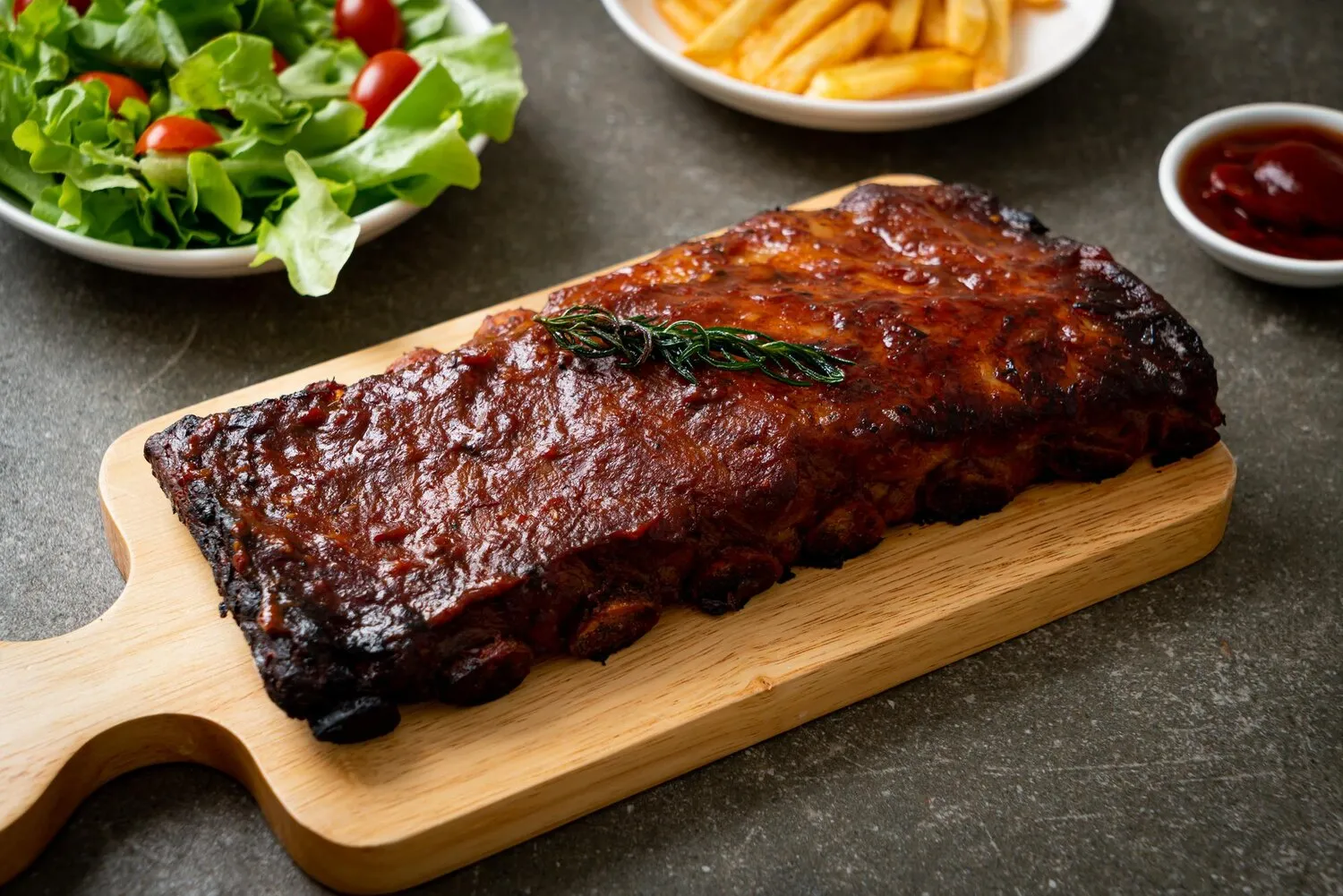
Ribs
Grilled Ribs.
Nutrition Facts
* The % Daily Value (DV) tells you how much a nutrient in a serving of food contributes to a daily diet. 2,000 calories a day is used for general nutrition advice.
The history of ribs is intertwined with the history of barbecue itself. From early methods of cooking meat over open fires, practiced globally for centuries, American barbecue, and specifically ribs, evolved with influences from Native American, European, and African cooking techniques. The availability of pork in the Southern United States, combined with the resourcefulness of enslaved people and later African American communities, helped to shape the rib dishes we know today.
Grilled ribs are deeply ingrained in American barbecue culture, particularly in the Southern United States. They are a staple at cookouts, family gatherings, and competitive barbecue events, symbolizing hospitality, community, and a shared love of good food.
Barbecue Competitions
Ribs are a common category in barbecue competitions, showcasing the skill and creativity of pitmasters from across the country. These events are often judged on tenderness, flavor, and overall presentation.
Family Gatherings
Ribs are often served at family gatherings and celebrations, representing abundance and togetherness. The act of grilling and sharing ribs is a social event, bringing people together over a shared meal.
Regional Variations
Different regions of the United States have developed their own distinctive styles of ribs, from the dry-rubbed ribs of Memphis to the saucy ribs of Kansas City, reflecting the diverse culinary traditions of the country.
Grilled ribs offer a complex blend of smoky, savory, and often sweet flavors. The specific taste profile varies greatly depending on the cut of ribs, the rub or marinade used, and the type of wood or charcoal employed for grilling.
The primary flavor component is savory, derived from the pork itself. This is enhanced by rubs and marinades, which commonly include ingredients like salt, pepper, garlic powder, onion powder, paprika, brown sugar, and chili powder. The grilling process imparts a characteristic smoky flavor, the intensity of which depends on the fuel used (e.g., hickory, mesquite, applewood). Sweetness is often added through BBQ sauces, which may contain honey, molasses, brown sugar, or even fruit purees. The interplay of these elements creates a rich and satisfying flavor experience.
Low and Slow
Grilling ribs at a low temperature (around 225-250°F) for an extended period allows the collagen to break down, resulting in incredibly tender meat. Use indirect heat to prevent burning.
The 3-2-1 Method
A popular method involves smoking the ribs for 3 hours, wrapping them in foil with liquid for 2 hours, and then unwrapping and grilling them for the final hour, basting with sauce if desired. This helps tenderize the meat and create a flavorful crust.
Moisture is Key
To keep the ribs moist during grilling, consider using a water pan in the grill or spritzing the ribs with apple juice or vinegar every hour. This helps prevent them from drying out.
Check for Doneness
The best way to check for doneness is to use the bend test. Pick up the ribs with tongs; if they bend easily and the meat cracks on the surface, they are ready. You can also use a meat thermometer; ribs are typically done at an internal temperature of 190-205°F.
Explore additional Main Course dishes and restaurants
Explore Main CourseDiscover top dining spots and culinary experiences in La Spezia.
Explore La SpeziaLearn more about the food culture, restaurant scene, and culinary heritage of Italy.
Explore Italy